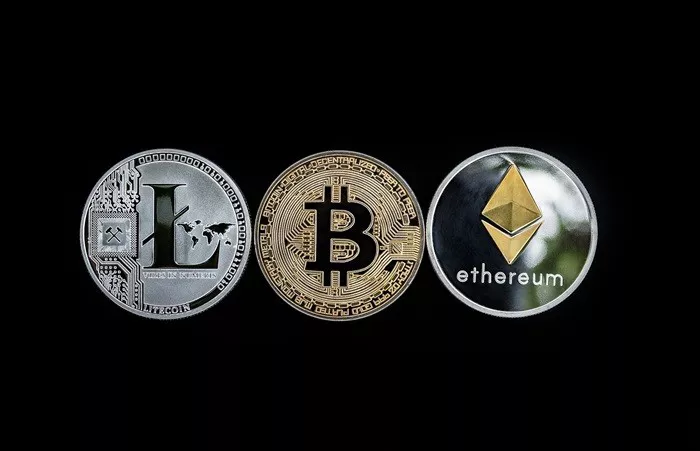Everyone knows these giants — the names you see at airports, the logos in Super Bowl ads. They’ve helped define the space, bringing scale, access, and visibility to crypto on a global stage. But at the same time, a more focused class of platforms is emerging. These streamlined, carefully crafted platforms are built for users who crave focus, control, and a sharper edge.
Some projects strip everything down to the bare essentials — one token, one mission. Bitcoin is a savings mechanism, not a speculative thrill ride. Others are completely transparent — asset ledgers updated every 18 seconds, no hidden vaults, no clever leverage. You know where your money is. You know it’s still yours.
They’re adding depth to the ecosystem, filling gaps with tools built for control and clarity — early access to tokens before the hype starts, guaranteed returns with stable volatility, and hybrid models that combine self-custody with lightning trading. Speed, without compromise.
They’re building deliberately — perfecting the functionality of crypto exchanges.
Let’s take a closer look at five crypto exchanges doing different things in 2025.
Backpack
After FTX, where interfaces still feel outdated and disjointed, Backpack offers a reset: an app that merges a self-custodial wallet with a fully regulated exchange.
“Most wallets and exchanges still feel like they were built for insiders,” said Armani Ferrante, founder and CEO of Backpack. “We designed Backpack to feel intuitive — simple, seamless, and secure. Everything just works.”
The end result is a crypto experience that’s as streamlined as it gets. No switching between platforms, no worrying about custody. Just one streamlined environment where users are always in control.
But Backpack isn’t just about simplicity. It’s also building for the future: interest-bearing perpetual swaps, tokenized real-world assets, and a self-custodial security system (SAFE) with built-in key recovery. Each product is designed to expand users’ ability to use crypto without sacrificing security or sovereignty.
Compliance isn’t an afterthought, it’s foundational. Backpack was born in the post-crisis era, and is designed around regulation, transparency, and user protection. Assets are 100% segregated. Proof of Reserves is the norm. Every layer is auditable.
“Our mission has always been to build trust through clarity,” Ferrante stressed.
“Secure, transparent, and in control—that’s what Backpack is all about.”
Abra
In the fast-changing and often chaotic world of digital finance, Abra is committed to building a platform that endures. As CEO Bill Barhydt puts it: “Abra is focused on one thing—being the next generation crypto bank. We bring together crypto-backed lending, yield, trading, and fully regulated custody services into one seamless, institutional-grade platform.”
This isn’t a sales pitch, it’s a transformation.
Already the largest crypto-backed consumer lender, Abra is scaling up—expanding its infrastructure to support family offices, corporates, and institutional investors entering the space with clearer strategies and bigger bets.
“Our custodial account model is designed for transparency,” Barhydt said. “Each customer’s assets are held in segregated vaults and are viewable on-chain. This is not just about appearances, it’s about trust, compliance, and control.”
This structure is particularly attractive to mid-sized and large companies looking to follow the so-called “micro-strategy playbook”—adding Bitcoin or other digital assets to their balance sheets, but with institutional safeguards.
Abra’s strategy is not about disruption, but integration. It’s not about destroying the existing system, but about integrating crypto into the financial system in a prudent and clear way. Ultimately, Abra has created a full-service cryptocurrency platform that doesn’t feel like a gamble.
“In short, Abra offers organizations a way to unlock the value of crypto without compromising oversight or security.”
Uphold
In volatile markets, Uphold offers an even more compelling advantage: early access to high-potential tokens, a strong monetization mechanism, and near-obsessive transparency.
“For retail investors, it’s about three things,” explained Chief Revenue Officer Nancy Beaton. “Access, yield, and trust. We give users early access to promising tokens, competitive rewards, and real-time visibility into their funds.”
Uphold’s advantage starts with intelligence—its research team is able to spot promising assets ahead of time, and rewards members get 24-hour advance access to listings.
The platform offers staking on 19 assets, up to 5% stablecoin returns, and USD accounts with 4.4% APR, with FIDIC insurance up to $2.5 million.
Transparency is the cornerstone: Uphold publishes a real-time overview of its assets and liabilities every 18 seconds. “We don’t just talk about transparency—we live it,” Beaton said. “No fine print, no surprises.”
For enterprise clients, Uphold powers on-chain payments and banking across more than 30 liquidity venues, seamlessly bridging centralized and decentralized finance.
In Bitton’s words, the mission is clear:
“We’re not here to follow the model. We’re here to redesign it.”
Coinbits
In a cryptocurrency space saturated with countless altcoins, Coinbits takes the opposite approach: It’s designed to support only Bitcoin.
“We’re not an exchange. We’re not chasing the next token trend,” said David Birnbaum, Coinbits’ vice president of marketing. “Coinbits is about one thing: making Bitcoin easy to use — for people who don’t want to get burned out by day trading.”
The core of the platform is the Round Ups feature, which automatically invests the spare change from everyday shopping into Bitcoin. It’s subtle, passive, and conscious. It’s a tool that quietly builds wealth in the background, without any attention.
Coinbits doesn’t promise overnight wealth. It doesn’t drive up prices or volatility. It provides intuitive, easy-to-use tools based on user needs, rather than intimidating tools.
“For us, Bitcoin is more than just an asset,” Birnbaum explained. “It’s the foundation of financial sovereignty. Our job is to help people achieve that goal smoothly and without friction.”
This is a platform built for people who want to own Bitcoin but don’t want to be crypto experts. No clutter, no distractions — just stable, automated long-term accumulation.
“We’re not chasing hype,” Birnbaum added.
“We’re helping people build freedom — one step at a time.”
Cube
Cube is positioning itself as a new kind of exchange — one that blends the speed and familiarity of traditional finance with the trust and transparency of Web3.
“At Cube, we’ve built a hybrid exchange that connects two worlds,” said co-founder and CEO Bartosz Lipinski. “We’ve combined the user experience and performance of traditional finance with the security and ownership principles of Web3. That’s what sets us apart.”
Cube rethinks control with its multi-party computation (MPC) wallet system, allowing users to trade without giving up custody. “Trade without giving up custody,” Lipinski added. “Keys are decentralized and stored in independent validators — no party, not even Cube, can access your funds without permission.”
Speed is critical to Cube — not as a feature, but as its foundation. Its engine runs 40 times faster than the industry average, minimizing slippage and lock-ups in real-time trading.
The platform is available on desktop, iOS, and Telegram, and comes with professional tools like TradingView. Its hybrid model blends off-chain order matching and on-chain settlement, balancing performance and transparency.
Gamified onboarding and built-in compliance tools round out the user experience, making Cube fast, secure, and user-first.
Lipinski doesn’t overcomplicate it: “Our mission is to help the United States and the world upgrade trade.”
Final Thoughts
As these platforms appeal to institutions and individuals alike, their core offerings are the same: more control in your hands and less market chaos.
Cryptocurrency is no longer just fringe gambling — it’s now ubiquitous, pulsating through the modern financial system. Crypto exchanges? The backbone.

































